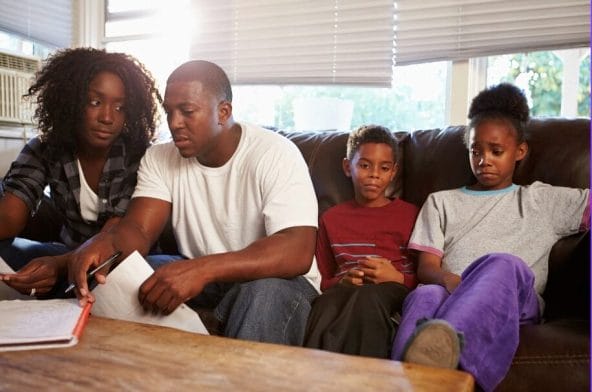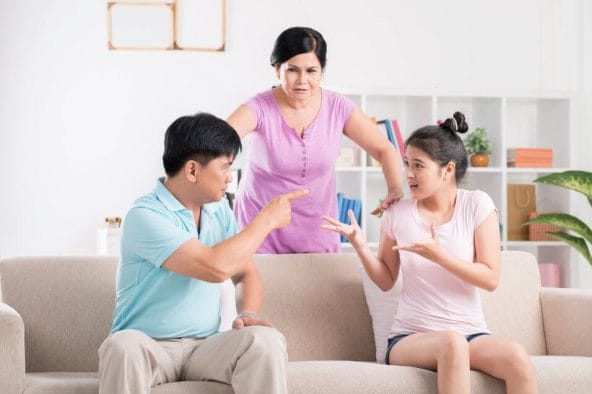
Breaking the Silence: Exploring the Dark Reality of Child Abuse
- Updated: November 4, 2024
As a healing and leadership coach, I’ve learned that personal experiences can profoundly shape one’s journey. In this article, let’s dive into a crucial topic: child abuse.
Child abuse is a complex issue that deserves our attention, not only for its immediate impact but also for its tendency to persist from one generation to the next. We will explore the potential causes of abusive behavior, emphasizing that there is never an excuse for such actions.
Additionally, we will address the difficult question of why some individuals who have experienced abuse may go on to inflict harm on others, shedding light on the emotional turmoil that perpetuates this cycle.
Just because it is normalized within a family or culture doesn't make abusing a child right. Every child is entitled to safety, shelter, and security from the adults around them.
Denise G. Lee Tweet
What is Child Abuse?

Alright, let’s break it down. Child abuse isn’t just one thing; it’s like a bunch of not-okay stuff that happens to kids. And it doesn’t matter if harm is caused by a parent, teacher, or even their sports coach. Abuse is abuse. Here are some of the ways a child can be abused.
Neglect
Neglect occurs when a caregiver fails to provide for a child’s basic needs, including not only physical necessities like food and clothing but also emotional support. This can include a lack of attention to a child’s feelings or being unavailable when they need help.
Abandonment
Abandonment refers to the feeling of being left alone or ignored. When a child senses that no one cares about them or that they are isolated, they experience abandonment, which is deeply distressing.
Often, survivors of abusive homes did not recognize their situation as abuse at the time. They were simply trying to survive each day, and understanding their painful reality was a luxury they couldn't afford. Consequently, their suffering was frequently ignored, invalidated, or treated as an inconvenience by those who should have provided love and support.
Denise G. Lee Tweet
Verbal, Physical, or Sexual Mistreatment
Now, this is the heavy stuff. Verbal abuse involves saying hurtful things, while physical abuse is the use of force to harm a child. Sexual mistreatment occurs when inappropriate actions make a child uncomfortable. All forms of abuse are wrong and unacceptable.
Expose to Explicit and/or Dangerous Content
This includes exposing children to inappropriate images, words, or dangerous situations that can harm their mental health. Children should be protected from adult content until they are ready to understand it.
Emotional Incest
This might sound weird, but it’s basically when a grown-up treats a kid like they’re a partner or shares things with them that are way too grown-up. It’s confusing and not at all how things should be.
Often, survivors of abusive homes never thought they were being abused at the time. Besides, they were only trying to survive each day. Trying to understand a pain-filled reality was a luxury that a victimized child couldn’t afford. As a result, their pain was often ignored, invalidated, and treated as an inconvenience by those who should have provided them warmth, love, and attention.
Next, let’s talk about why a parent or parent-figure would do something that can harm a child.

What Causes Child Abuse?
Hint: There isn’t a single cause
Child abuse doesn’t have a single root cause; it’s like this messy mix of different factors. One biggie is a history of abuse within the family. Picture a parent who had a rough go of it in their own childhood, facing mistreatment or harm. Without learning healthy ways to handle stress or frustration, they might unwittingly carry on the cycle by treating their own kids the same way they were treated.
Stress and coping issues also play a huge role. Families dealing with crazy levels of stress or money troubles might resort to harmful coping methods, including abuse. Imagine parents pushed to their limits by financial problems, struggling to cope. If they don’t have healthy ways to deal, that stress could accidentally spill over onto their kids.
Mental Health Struggles
Then there are mental health problems in the mix. Parents dealing with issues like depression or substance abuse find it tough to create a safe and nurturing environment for their kiddos. Depression, for instance, can mess with a parent’s emotions, making it hard for them to give the love and care a child needs.
Some parents just haven’t been taught how to be effective parents. If they didn’t have role models showing them patience, understanding, and support, they might be clueless about handling the challenges of raising kids. It’s like trying to build IKEA furniture without the instructions – a bit of a disaster.
If parents are constantly at each other's throats or struggle to bond with their kids, it creates a tense atmosphere at home. This tension can make it hard for parents to connect with their children in a positive way, leading to misunderstandings or frustration that can turn into abuse.
Denise G. Lee Tweet
Societal and Familial Struggles
Social and cultural factors add to the mix too. Sometimes, cultural norms or societal pressures make people believe being strict with kids is the way to make them behave. If a parent grows up in a place where this is the norm, they might think it’s cool to use harsh discipline, even if it’s not the best approach.
And then there are relationship issues within the family. If parents are constantly at each other’s throats or struggle to bond with their kids, it creates a tense atmosphere at home. This tension can make it hard for parents to connect with their children in a positive way, leading to misunderstandings or frustration that can turn into abuse. On top of that, there may be guilt for things that happened which were never the fault of the child.
Just to be crystal clear, abusive behavior is never okay, and we’ve got to step in to protect the kiddos. If you or someone you know is dealing with or witnessing child abuse, don’t hesitate – report it to the right folks or reach out to local support organizations.
Why is Child Abuse Multigenerational?

Now, let’s tackle the big question: why do some folks who’ve been through tough times as kids end up repeating the cycle? It’s like, why does this messed-up pattern keep going?
Well, those doing the hurting might have a tough time handling their emotions. They struggle to control how they feel, understand other people’s feelings, and see power and control in a skewed way. A lot of times, their actions stem from issues they never worked through, creating a cycle of problems.
Here’s the kicker – some abusers might actually know, deep down, that what they’re doing isn’t right. Even with their emotional struggles, they could grasp the impact of their actions. This adds a tricky layer to the whole situation and makes us ponder why people act that way.
Childhood trauma messes with how our brains work, making it tough to put our experiences into words. It's like the trauma flips a switch in our heads, making it hard to say what we need or express our feelings about the tough stuff.
Denise G. Lee Tweet
Why Many Adult Survivors Don’t Report Their Abusers
Now, survivors often stay quiet for two big reasons. First, family ties are emotionally complicated. It’s hard for survivors to speak up against their own family, even if they’re not behaving right. There’s this strong feeling of loyalty or a deep need for family connection, even when things are going south.
Secondly, survivors struggle to talk about what happened. Childhood trauma messes with how our brains work, making it tough to put our experiences into words. It’s like the trauma flips a switch in our heads, making it hard to say what we need or express our feelings about the tough stuff.
All these factors create a tough situation where the hurt can go on for a long time – we’re talking years, maybe even decades. The silence from survivors, tied to family bonds and trouble expressing themselves, creates a space where the hurt keeps happening.
Despite our pain-filled past, we can help prevent a future generation from being abused. You can use your awareness of abuse to prevent another child from abused. In the next section, we will talk about steps to prevent child abuse.
Preventing Child Abuse: Simple Steps for a Safer Future
As business owners, you have a unique opportunity to make a significant impact on your community, including in the realm of child welfare. Here are some ways you can contribute to preventing child abuse:

Child abuse is a big problem, but there are things we can do to stop it and keep kids safe. Here’s how we can prevent child abuse:
1. Be Kind and Listen
Treat kids with kindness and respect. Listen to what they have to say, and pay attention to their feelings. When kids feel heard, they’re more likely to speak up if something’s wrong.
2. Know the Signs
Learn about the signs of child abuse, like sudden changes in behavior, unexplained injuries, or withdrawal. If you see something that doesn’t feel right, don’t ignore it.
Implement Child Safety Policies
If your business involves working with children—such as in schools, camps, or recreational programs—implement robust child safety policies. Conduct background checks for staff and volunteers and provide training on recognizing and reporting signs of abuse.
3. Report It
If you think a child is being abused, tell someone you someone who is a person in authority. Law enforcement officer, principal or whoever else who has influence. And don’t stop reporting until something happens to keep the child safe.
4. Teach Kids about Safe Touch
Help kids understand what’s okay and what’s not when it comes to touch. Encourage them to speak up if someone makes them feel uncomfortable. The video below explains how to teach kids this concept.
5. Share Information
Use your platform to raise awareness about child abuse prevention. Share information through your business’s marketing channels, whether through social media, newsletters, or community events, to educate your audience about the signs of abuse and available resources. Also, talk to friends, family, and your community about child abuse prevention. The more people know, the safer our kids will be.
6. Support Organizations
Help and support organizations that work to prevent child abuse. They provide resources, counseling, and assistance to families in need. Partner with local child welfare organizations or charities dedicated to preventing child abuse. Consider donating a portion of your profits, hosting fundraising events, or providing resources and services that can assist these organizations in their missions.
7. Be a Positive Role Model
Show kids how to handle problems in a positive way. By being a good role model, you teach them healthy ways to cope with stress and frustration.
Act as a mentor for young entrepreneurs or students in your community. By offering guidance and support, you can create positive role models and demonstrate healthy relationships, helping to break the cycle of abuse.
8. Stay Informed
Stay updated on child abuse prevention resources (like this one) and information. The more you know, the better equipped you are to protect kids.
Remember, preventing child abuse is everyone’s responsibility. By taking these simple steps, we can create a safer and happier future for our children. If you ever need help or have concerns, don’t hesitate to reach out to someone you trust. Together, we can make a difference. My thoughts are summarized in the image below. Next, I’ll share my final thoughts.

Final thoughts
Childhood abuse, it’s a tough and painful journey, not just for the little one but for everyone caught up in the mess. And you know what? That includes the person doing the hurting. They need help and healing too. It might sound surprising, but I never want to make it seem like there’s only one victim in this whole mess.
Don’t Hesitate to Report Abuse
Now, if you’re aware of someone going through abuse, do me a favor – report it, and do it pronto. Even if you think you don’t have proof, trust your gut if it’s telling you something’s not right. And to those who’ve done harm to a child, it’s time to step up and seek help. If you need to, step away from the situation so that everyone can get the support they need from the right places.
And hey, if you’re a survivor, someone who’s been through the wringer and is taking those first steps toward emotional healing, I’m here for you. Reach out – don’t hesitate. Let’s chat, and let’s figure out how I can lend a hand in your journey. You’re not alone, and there’s help waiting for you.
Also, listen to this episode from my entrepreneur podcast about how a painful childhood can impact you as an adult.





